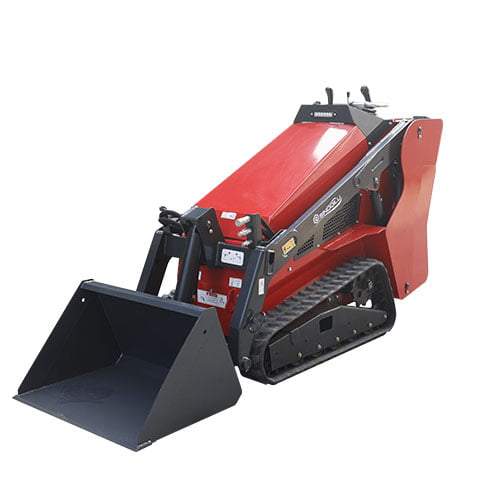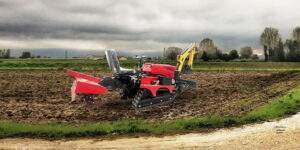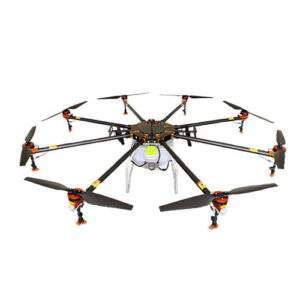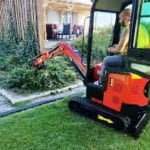Mini Skid Steer Loaders: The Perfect Solution for Tight Spaces
Introduction
In the world of construction and landscaping, maneuvering heavy equipment through tight spaces can pose a significant challenge. Traditional skid steer loaders, while powerful and versatile, often struggle to navigate confined areas, limiting their usefulness in certain applications. This is where mini skid steer loaders step in, offering a compact and maneuverable solution that tackles even the most challenging job sites.
Unveiling the Mini Skid Steer Loader

Mini skid steer loaders, also known as compact utility loaders or mini track loaders, are a smaller, more agile version of their larger counterparts. They typically weigh between 2,000 and 4,000 pounds (907 to 1,814 kg) and measure less than 6 feet (1.8 meters) in width, making them ideal for navigating narrow passages, doorways, and other tight spaces.
Advantages
Mini skid steer loaders offer a multitude of advantages over traditional skid steer loaders, particularly in confined environments:
- Superior Maneuverability: Their compact size and tight turning radius enable them to navigate tight corners, obstacles, and uneven terrain with ease.
- Reduced Damage Risk: Their smaller size minimizes the risk of damaging structures, landscaping, or other objects in close proximity.
- Accessibility: They can easily access areas that are inaccessible to larger skid steer loaders, such as backyards, basements, and interior renovations.
- Versatility: Despite their compact size, mini skid steer loaders retain the versatility of larger models, accommodating a wide range of attachments for various tasks.
Common Applications of Mini Skid Steer Loaders

The versatility of mini skid steer loaders makes them suitable for a diverse range of applications, including:
- Landscaping: They excel in landscaping tasks such as digging trenches, moving soil, and planting trees.
- Construction: Their maneuverability makes them ideal for indoor and outdoor construction projects, including renovations, framing, and concrete work.
- Municipal Maintenance: They are commonly used by municipalities for tasks like sidewalk repair, snow removal, and utility work.
- Agricultural Applications: They assist in farm tasks such as feeding livestock, cleaning barns, and maintaining fences.
- Industrial Settings: Their compact size makes them suitable for material handling and warehouse applications.
Popular Brands
Several reputable brands offer high-quality mini skid steer loaders, each with its unique features and capabilities:
| Manufacturer | Description | Strengths | Key Features |
|---|---|---|---|
| Bobcat | A leading manufacturer of skid steer loaders, Bobcat offers a comprehensive range of mini skid steer models | Known for their durability and performance | Robust construction, powerful engines, versatility in attachments |
| John Deere | Renowned for its agricultural machinery, John Deere produces a line of mini skid steer loaders | Emphasizes operator comfort and ease of use | Ergonomic design, intuitive controls, smooth operation |
| Varyon | Skid steer loaders manufactured by Varyon are designed for construction and landscaping tasks | Delivers superior performance in any environment | Versatility, durability, precise control systems |
| Kanga | Known for compact and lightweight designs, Kanga mini skid steer loaders are well-suited for tight spaces | Particularly ideal for navigating tight spaces and sensitive environments | Compact size, low ground pressure, easy operation |
| Takeuchi | Renowned for reliability and ruggedness, Takeuchi mini skid steer loaders are popular choices for construction | Trusted for their durability, performance, and low maintenance requirements | Heavy-duty construction, powerful engines, advanced hydraulic systems |
This table provides a concise overview of each manufacturer’s mini skid steer loaders, highlighting their descriptions, strengths, and key features. It offers a quick reference guide for individuals comparing different options in the market.
Choosing the Right Mini Skid Steer Loader
When selecting a mini skid steer loader, consider the following factors:
- Application Requirements: Assess the specific tasks and environments where the loader will be used.
- Machine Size: Choose a size that is appropriate for the available workspace and maneuvering requirements.
- Lifting Capacity and Digging Depth: Ensure the loader’s capacity meets the lifting and digging requirements of the intended tasks.
- Attachment Compatibility: Consider the compatibility of the loader with the attachments needed for the specific applications.
- Operator Comfort and Safety: Evaluate the operator’s comfort features, safety features, and overall visibility from the cab.
Conclusion
In conclusion, mini skid steer loaders offer the perfect solution for navigating tight spaces in construction, landscaping, and other industries. With their compact design, powerful performance, and versatility, these machines provide operators with the ability to tackle a wide range of tasks with ease and efficiency, even in the most confined work environments.
FAQ
Q: What is the difference between a mini skid steer loader and a traditional skid steer loader?
Mini skid steer loaders are smaller, more maneuverable, and lighter than traditional skid steer loaders, making them better suited for tight spaces and sensitive environments.
Q: What are the typical operating hours for a mini skid steer loader?
Mini skid steer loaders can typically operate for 8-10 hours on a single tank of fuel, depending on the engine size and workload.
Q: What is the recommended maintenance schedule for a mini skid steer loader?
Regular maintenance is crucial for ensuring optimal performance and longevity. Follow the manufacturer’s recommended maintenance schedule, including oil changes, filter replacements, and inspections.
Q: What safety precautions should be taken when operating a mini skid steer loader?
Always follow proper safety procedures, including wearing personal protective equipment, conducting thorough site inspections, and operating the loader within its weight and capacity limitations.



